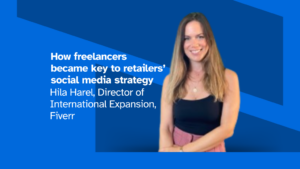By Carl Carter, Marketing Strategy & Effectiveness Director, IRi
The lifestyle and economic changes caused by COVID-19 are bringing about challenges on a scale not seen before. Expenditure is under increased scrutiny and advertising is one area where it could be tempting to cut back, but where there are challenges there are also opportunities to be realised. How can marketers know what is the right choice?
The economic impact of COVID-19 makes recession seem a certainty at this point, although there is much debate as to how damaging it is likely to be. However, looking at patterns from previous recessions, the FMCG sector is likely to be better placed than many to withstand the pressure.
A WARC study into the 2009 recession found that in the UK, the food sector reduced advertising investment by 1.3% to £860m and the drinks sector by 2.3% to £321m. This compares to a 5.6% fall for total FMCG (to £1.98bn) in the UK and an 11.7% dip for the total display market, suggesting the sector was insulated somewhat compared to the wider economy.
Figures suggest however that just 7% of UK marketers are taking a strategic approach to invest more in marketing during the COVID-19 pandemic, with the vast majority feeling forced to maintain or cut spend in the face of business disruption. Many have been uncertain about how to adapt advertising plans or whether to even advertise at all.
The guidance available has not gone far enough to help brands and advise them what to do in specific circumstances. At IRI we have brought together data from across Europe to get an informed perspective of what brands should do. We believe that by considering the following six key questions, all businesses will have the information that they need to make an informed decision.
1. Timing is everything
Think about your position not only now, but how it might change in the medium and long term. Your ability to adapt is key in these unknown times.
2. How has demand changed?
Identify what the demand is for your products. Has this increased, stayed the same or declined? Are these changes likely to be short-lived due to panic buying, or could they possibly become a longer-term change in behaviour. This will inform whether the time is right to change your advertising and media mix, and in what way.
3. What are the purchase cycles?
Are they longer, shorter or have they stayed the same? This will have a huge impact on the timings of when you advertise. It may also have longer-term implications for pack size and the NPD cycle in order to capture all opportunities on offer.
4. Can we meet demand?
Perhaps is it challenged or just reduced for a period of time. Supply chain issues which mean you cannot meet demand can be problematic, but there is a long-term damage to brand equity by reducing advertising. A careful messaging approach will be needed to strike the right balance.
5. Are retail channels altered?
Across Europe, online and click & collect services have seen double, sometimes triple, digit increases in sales as shoppers seek to comply with guidelines and avoid crowds. Shopping locally has also become more popular. These factors could impact how you advertise or at least your mix of advertising altering your digital, mobile and OOH (Out of Home) balance to take advantage of specific circumstances.
6. Are we ready to advertise?
Are creatives, channels and stakeholders primed and ready to go? Can you take advantage if you see an opportunity in the market?
Some of the behavioural changes that have taken place because of the health crisis, and particularly the lockdown, may well outlast the pandemic. Many people will have changed their way of shopping. This might be by channel, shopping more locally or online. Or it could be when they shop, for example in the week instead of at the weekend. It is also likely that changes in media consumption will stay as working from home becomes more common.
Even as lockdown eases there are some material changes, at least for the foreseeable future, in how people are able to live. The OOH sector, although showing signs of beginning to open up more, will not be able to operate in the same way or support the same volume of people. This means that there will continue to be consumption occasions in the home that simply did not exist before.
While we cannot look into the future, we can use these questions to better understand the critical areas that need to be considered before making strategic advertising decisions. This gives marketers, and importantly their board and investors, the confidence that they need to support and justify advertising investment.









